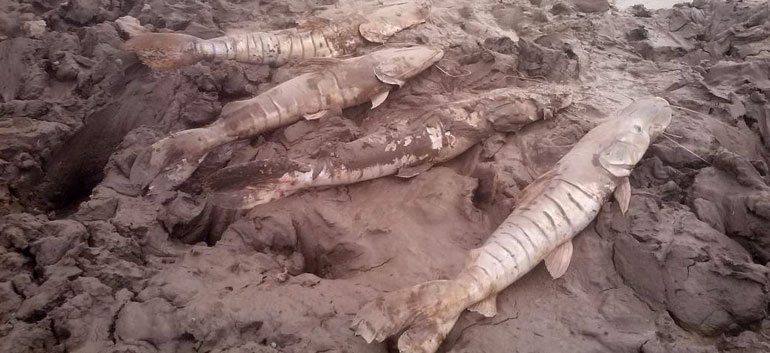Colombian President Juan Manuel Santos has announced on his Twitter page that the government will be taking measures against the drought that is currently devastating the Casanare region in central eastern Colombia, and which has already killed at least 20,000 animals.
“With the National Council for Disaster Management we will set in motion additional measures to alleviate the effects of the drought in Casanare,” Santos tweeted on Monday, though he did not add details as to what these actions might be.
Con el Consejo Nacional de Desastres pondremos en marcha medidas adicionales para mitigar efecto de la sequía en el Casanare
— Juan Manuel Santos (@JuanManSantos) March 24, 2014
Casanare has not seen rain since last December, while being scorched by 40 to 45 degree centigrade heat, reported W Radio. Over 20,000 cattle and wild fauna have died of dehydration, with the northern region of the state being the worst affected.
According to the Autonomous Regional Corporation of Orinoquia (Corporinoquia), the drought has killed more than 10% of all the animals in Casanare so far.
MORE: 20K animals dead in east Colombia drought
In response, the state governor Marco Tulio Ruiz set up an environmental emergency plan, which includes gathering the decomposing animal carcasses which had been buried to avoid the spread of disease. These works have already begun in four rural communities of the Paz de Ariporo municipality.
Other measures involve using heavy machinery in the construction of watering troughs and reservoirs to provide water to the people and fields of the region.
MORE: Authorities to investigate handling of environmental crisis in eastern Colombia
Among the animals known to be affected are the capybara – the largest rodent in the world – fish, caimans, turtles and other reptiles. Cultivations have also been ruined and many local water reserves depleted.
Authorities also state that the droughts have been damaging in the municipalities of Hato Corozal and Trinidad, both in Casanare.
Comments to Santos’ twitter post also highlight the ongoing drought worries in the states of Riohacha, Magdalena and Atlantico. This last state has seen a reported 1,500 hectares of land destroyed in fires caused by a lack of rain and water reserves this year alone, a tripling of figures compared to 2013. The cattle sector of Riohacha has declared itself in crisis and is selling meat at the same price as ten years ago partly due to droughts.
Though seasonal droughts are typical to Colombia, often caused by the radical temperature changes labelled the “El Niño,” phenomenon, such extreme weather and animal loss like that seen in Casanare is less common.
Sources
- Gobierno tomará medidas contra la sequía en Casanare (El Tiempo)
- Santos anunció que el Gobierno tomara medidas contra la sequía en Casanare (W Radio)
- Afectadas 1.500 hectáreas por incendios en Atlántico (El Heraldo)
- Gremio gnadero de Riohacha se declara en crisis (El Heraldo)
- Alerta en la Costa por prolongada sequía (El Heraldo)



